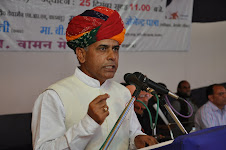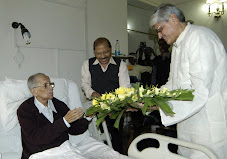The Marichjhapi Massacre & The End Of The Left
The warning signs were there right from the start – but it took 34 years for voters to turn against the ruthless control of the Communist party.

Over three decades of Communist rule came to an end in West Bengal yesterday in quite spectacular fashion. A total of 19 ministers lost their seats, including the chief minister, the industries minister and the finance minister. The Left Front won just 63 seats to the Trinamul Congress' 225.
The general opinion seems to be that this was more of a rejection of the Left Front government than a show of support for Trinamul and its fiery little leader, Mamata Banerjee, despite her skilful marshaling of popular anger at the stagnation of the economy and recent violence by the state.
The fall-out from Nandigram and Singur certainly played a big part in the Communist's downfall. Between 2006 and 2008, mass movements against industrial projects in these towns – a chemical hub and a Tata Nano factory – shattered the carefully crafted illusion that the government was still on the side of the poor and oppressed. In December 2006, members of the CPI(M) were accused of raping and burning to death a teenage girl involved in the agitation at Singur. Three months later, 14 people were killed at Nandigram when police opened fire on protesters.
For decades, the party had lived off the reputation it earned in the late 1970s when it forcibly appropriated land from rich landowners and redistributed it among the poor under a scheme known as Operation Barga. The violence in Nandigram and Singur showed a similar contempt for property rights, but this time in favour of the rich and powerful.
But for those who claim the CPI(M) had merely lost its way in recent years, it is worth returning to an incident from its early days that shows the party always had a dark side.
In 1978, the CPI(M) had only been in office for a few months when it turned the full force of the state on a group of refugees in the remote swamplands of the Sunderbans. (Outlook India)
(Outlook India)
During and after Partition, thousands of Hindus had fled the violence in eastern Bengal. The rich were able to settle around Calcutta, but the lower castes – particularly the Dalits, or Untouchables – were sent off to tribal areas of central India, where they faced considerable local hostility. (Many have remained, and it is for this reason that I recently found myself eating a Bengali fish curry in someone's home in Chhattisgarh.)
When the CPI(M) was campaigning ahead of the 1977 election, it promised to accommodate all Bengali-speakers who wanted to return – which played well with refugee voters still within the boundaries of the state.
But this bit of electioneering quickly backfired on the Communists when they came to power. An estimated 100,000 Dalit refugees suddenly showed up in Calcutta's train stations, annoying the locals and overwhelming an unprepared administration. Many refugees were arrested or returned to the settlement camps.
A group of around 10,000 refugees managed to slip through and make their way to the island of Marichjhapi in the Sunderbans. The government was not pleased. It argued that the settlement would disturb the tiger population, damage the environment and possibly act as a base for counter-revolutionaries.
Its response was vicious. From around August 1978, the police began encircling the island with 30 boats to establish an economic blockade. Public meetings were banned, and food and water supplies were prevented from entering the island. On several occasions, police opened fire on the islanders. Some reports say only a couple of people were killed in these incidents – others say a couple of hundred. The bigger problem was starvation and disease, which the islanders later claimed cost 1,000 lives.
By May 1979, the government had grown impatient. It hired Muslim gangs to forcibly evict the islanders, following the logic that they would be less sympathetic to Hindu Dalits. One report said that:
"Most of the young men were arrested and sent to the jails and the police began to rape the helpless young women at random. At least several hundred men, women and children were said to have been killed in the operation and their bodies dumped in the river."
What really worried the Communist government was not the fate of the tiger population, but the success of the islanders in establishing an alternative power base. As became clear in later years, the party's chief priority was to establish total control over the political, social and economic lives of its citizens. As one person told me this week: "The party will tell you whether it's best to sleep on your back or your belly."
Although the party's reforms initially had a great impact on agriculture, the overwhelming strength of its party organisation had disastrous consequences for industry, education, health services and much more because it made party loyalty more important than merit.
Here is an extract from my story in The National which describes the rise and fall of the Left:
The party combined Operation Barga with a widespread decentralisation of power to village councils and the introduction of new agricultural techniques – particularly a high-yield form of rice known as "boro".
"The impact of all these measures was witnessed in later years, particularly during the period from the mid-1980s to 1990s, when the state recorded the highest rate of growth of agricultural production in the country and rural poverty diminished dramatically," said Buddhadeb Ghosh, a former civil servant and now senior fellow at the Institute of Social Sciences in Kolkata.
But after the initial rush, the reform movement began to stagnate.
"By the time it was elected for the second term, the Left seemed to have exhausted all its ideas," said Mr Ghosh. "From 1982 onwards, its major aim was to stay in power."
There were further problems to come when India began liberalising its economy in the early 1990s.
"The opening up of trade meant an end to subsidies from the central government on things like fertiliser and diesel," said Abhirup Sarkar, a professor of economics at the Indian Statistical Institute in Kolkata. "It also led to increasing competition from foreign markets like Thailand."
By the turn of the century, 14 per cent of those who had been given land under Operation Barga had abandoned it in search of employment elsewhere. But there were few opportunities to be found.
A combination of militant trade unions, unscrupulous employment practices and efforts by the federal government to undermine its Communist opponents had led to a steady decline in West Bengal's industrial sector. Since the 1980s, it is estimated that 56,000 factories have closed across the state, forcing hundreds of thousands into precarious occupations as rickshaw pullers, cleaners and other unregulated parts of the informal sector.
While the state's GDP has continued to tick along just below the national average – buoyed by a modest IT sector that employs only small section of highly educated graduates – it has been overtaken by the southern states where the bulk of India's recent services boom has been focused.
It has also amassed huge debts, estimated at close to US$44 billion at the end of last year.
Underlying many of the government's failures were disastrous attempts to reform the social character of the state, particularly through education.
"The party abolished English from the curriculum of primary classes and tried to replace the popular textbooks by books written by academics loyal to the party," Mr Ghosh said.
"Its textbook projects were criticised as an attempt to brainwash children with communist ideas."
Although these measures were later abandoned, the CPI(M) became a victim of its own success in politicising and organising its members. CPI(M) cadres and unions infiltrated almost every sphere of political and social life. Loyalty to the party became more important than merit and qualifications, with adverse implications for everything from theatre groups to its once-renowned universities, and even the health sector.
"Eighty per cent of the pharmaceutical market in West Bengal consists of unscientific, irrational and even banned drug formulations," said Jana Swap, the joint secretary of the Health Services Association, an advocacy group in Kolkata. "But because the drug companies do deals with the doctors unions, and because they are affiliated to the party, the government doesn't do anything about it."
When I met Prof Sarkar, he raised the question of how the CPI(M) had continued to hold on to power in the 1990s and 2000s despite the implosion of the economy. "Is this a sign that democracy was not working here?" he asked.
In fact, it seems that the Communists had been extremely effective at rallying voters regardless of overall economic performance, using small handouts and favours – and threats – to ensure continued loyalty.
That is why the Trinamul victory does feel like something of a revolution. Breaking out of that iron grip was a risky proposition for each voter. If the CPI(M) had won, those who had turned against the party would have faced effective excommunication from their community.
But like every popular uprising, it was a question of momentum. When people saw Mamata and the Trinamul had a chance of victory, they flocked to her in droves – at last feeling secure enough to turn against The Party.
Now let's see what Mamata does with this second independence day.





































No comments:
Post a Comment